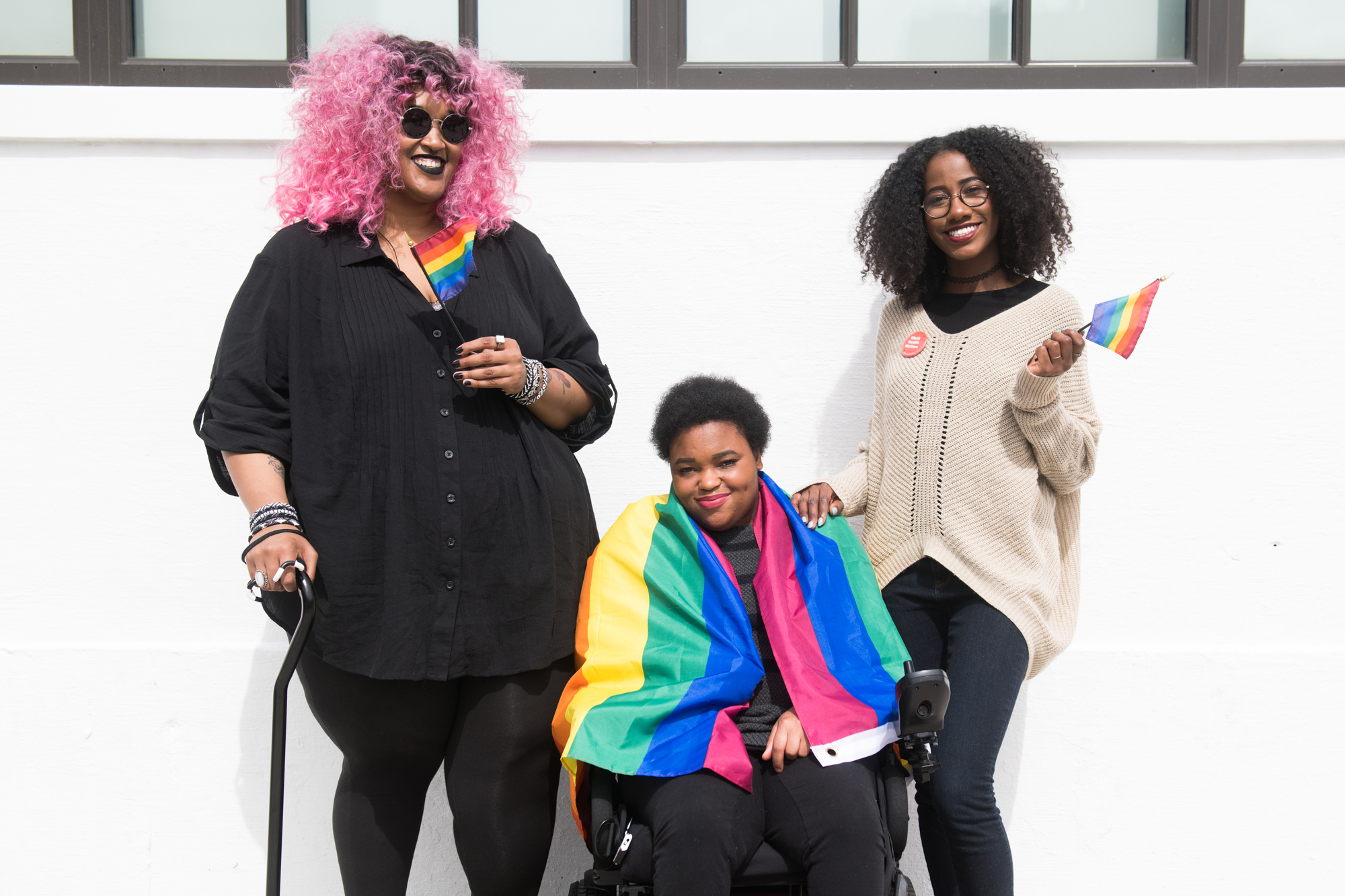Along with his collective, Oh Shit! What Now? Kit curated a collection of zines for the Antifascist Days of Unity in October 2019.
Category: Creative Commons

Believe Disabled People: When People Don’t Believe You’re Sick
Posted in Creative Commons, and Journalism
Believe disabled people.
Believe disabled people, whether or not we look disabled.
If you can absorb that statement, you can probably skip this post. However, read on for some more nuance and examples from my life.
Using A Cane With An Invisible Disability
Posted in Creative Commons, and Life
I thought I’d write for a moment about what it means to use a cane as a person with an invisible disability (fibromyalgia).
Invisible disabilities are life-altering health conditions which are nonetheless not always visible to a normal observer. Even a trained medical professional might miss them under casual observation. Fibromyalgia is a debilitating, and poorly understood condition. It combines chronic pain with other symptoms like sleep disturbance and severe fatigue.
I don’t use a cane every day, which can contribute to confusion from people who don’t understand how disabilities can work. I might seem “able bodied” one day, but the next (or even later the same day) be hobbling around in pain.
Fascist Journalists Attack The Poor: Laura Loomer & The Project Veritas Cycle
Posted in Creative Commons, and Journalism
It’s happened again. Fascist wannabe journalists attacked the most vulnerable, and as a result poor people will probably die.
Laura Loomer, a talking asshole fringed in blonde hair, is the latest to engage in a punch-down “sting operation” that’s targeted to hurt people with the most to lose.
In an investigative report that’s the talk of nazi rallies everywhere, Loomer went undercover in a refugee camp to expose the “shocking” fact that camp workers help refugees apply for aid in a way that minimizes.trauma and maximizes the likelihood that they’ll get help. Previously best known for spreading Islamophobic conspiracies about her Uber drivers, she’s now trying to graduate to the next level of far right pundit.
Threat Modeling For Activists: Tips For Secure Organizing & Activism
Posted in Creative Commons, and Journalism
Threat modeling is a fancy term for “knowing how to protect yourself in different situations.”
The idea of “threat modeling” originated in the military before being adopted by security experts. While the field includes many advanced concepts that don’t interest us here, threat modeling can help us get a handle on our personal security choices. In an age of mass surveillance, choosing what steps to take can feel overwhelming. For a lot of people, it may be easier to do nothing at all than worry about protecting yourself online.
Unfortunately, even if you feel like “you’ve got nothing to hide,” many of us are still vulnerable: to government repression, to police brutality and surveillance, and to threats from fascist forces. Even if you’re completely safe, your social networks might be used to target other people close to you. You might not even be aware that someone near you is taking actions that make them a target for surveillance.
OccupyICE San Antonio Standing Strong After Patriot Front Nazi’s Temper Tantrum
Posted in Creative Commons, and Journalism
OccupyICE San Antonio continues despite a failed attempt at intimidation by Patriot Front, a notorious group of Texas nazis.
For almost two weeks, activists have occupied the Immigrations & Customs Enforcement offices at 3523 Crosspoint Drive in San Antonio with tents and shade structures. Using noise demonstrations and direct actions, they’ve been disrupting business at the facility. Busloads of detained immigrant prisoners are a near daily sight. This ongoing protest is part of the national OccupyICE movement, which seeks to abolish ICE and put an end to the detention of immigrants and their families.
About 20 nazis from the Texas-based Patriot Front targeted OccupyICE San Antonio on the morning on Saturday, July 28. They arrived at about 8 am while most of the campers were asleep. After lighting a road flare, the nazis shouted racist slogans while committing petty attacks on the encampment.




